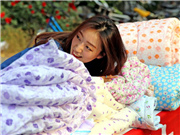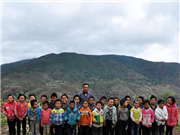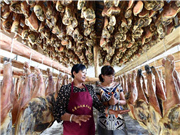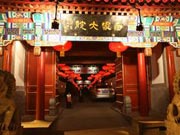

Figure 2
Balance of Local Government Finances in the General Public Budget in 2014
The following passages detail the specifics on the implementation of the central government’s general public budget in 2014.
1) Main revenue items
Domestic VAT revenue was 2.110297 trillion yuan, 97% of the budgeted figure. This shortfall was mainly due to increases in value added of industry and commodity prices being lower than projected at the beginning of the year, while the replacement of business tax with VAT also led to a considerable increase in business VAT deductions. Revenue from domestic consumption tax was 890.682 billion yuan, 100.4% of the budgeted figure. Revenue from VAT and consumption tax on imports amounted to 1.44244 trillion yuan, 96.6% of the budgeted figure. This discrepancy was mainly due to falls in both the prices of imported bulk commodities and the total volume of imports. Revenue from customs duties came to 284.319 billion yuan, 101.4% of the budgeted figure. Corporate income tax revenue was 1.58125 trillion yuan, 101.3% of the budgeted figure. Individual income tax revenue was 442.596 billion yuan, 103.2% of the budgeted figure. VAT and consumption tax rebates on exports came to 1.135648 trillion yuan, 100.2% of the budgeted figure. Non-tax revenue totaled 445.758 billion yuan, 119.3% of the budgeted figure, which was mainly attributable to the increase in profits turned over to the central government by some financial institutions.
Revenue in the central government’s general public budget exceeded the budgeted figure by 11.001 billion yuan in 2014, which was used to replenish the Central Budget Stabilization Fund and carried over to 2015 budgets in accordance with the newly revised Budget Law and other relevant regulations.
2) Main expenditure items
Expenditure on agriculture, forestry, and water conservancy reached 647.422 billion yuan, 99.8% of the budgeted figure and an increase of 8.4%. Of this total, central government spending accounts for 53.963 billion yuan, while transfer payments made to local governments account for 593.459 billion yuan. Trials were carried out to restore and improve cultivated land contaminated by heavy metals and deal comprehensively with the over-abstraction of groundwater. We implemented and improved policies on subsidies for farmers, and carried out trials in five provinces to subsidize major grain growers. The principle of giving high priority to saving water was put into action, leading to the improvement of small irrigation and water conservancy facilities in 1,200 key counties. Efforts to promote comprehensive agricultural development and upgrade low- and medium-yield cropland were stepped up, leading to the development of 1.8791 million hectares of high-grade cropland. Efforts were also devoted to cleaning up and improving the flood defenses of small and medium-sized rivers, with work completed on a total of 46,000 kilometers of river. Impetus was given to efforts to reinforce and improve the safety of small, poorly maintained reservoirs. We supported work to prevent flooding and fight drought. We supported the further mechanization of agriculture, and saw the overall level of mechanization in ploughing, sowing, and harvesting exceed 61%. New types of agricultural businesses were nurtured and supported. Improvements were made to the policy for supporting grassland ecological conservation, and subsidies were provided for 253.33 million hectares of grassland. We reformed the mechanisms for managing government poverty alleviation funds, ensuring that these funds were used to greater effect, and helped 12.32 million rural residents lift themselves out of poverty. Steady progress was made in the pilot reform to ensure guaranteed base prices for cotton and soybeans. The trial to comprehensively reform the pricing for water used in agriculture was deepened. We secured the completion of approximately 340,000 village-level public works projects launched on the basis of deliberation by villagers and covered by the government award and subsidy system.
Spending on social security and employment totaled 706.609 billion yuan, 98.8% of the budgeted figure and an increase of 8.5%. The shortfall is mainly due to actual spending on natural disaster relief and subsidies for entitled groups being lower than the budgeted amount. The total includes 69.988 billion yuan in central government spending, and 636.621 billion yuan in transfer payments to local governments. We provided social security subsidies and subsidies for public-service job positions to assist those experiencing employment difficulties. We implemented an initiative to guide business startups and encouraged university students to seek employment or start their own businesses. Basic pensions for enterprise retirees were raised by 10%, with per capita monthly benefits reaching 2,068 yuan. We merged the new type of pension system for rural residents and the pension system for non-working urban residents, creating a basic pension scheme for rural and non-working urban residents. As of July 1, 2014, the per capita basic pension for people participating in the new insurance scheme was raised by 15 yuan per month. We further raised subsistence allowances for urban and rural residents. Work was done to ensure basic necessities for people experiencing extreme poverty, and we supported the nationwide implementation of the temporary assistance system. We increased subsidies and living allowances by at least 20% for disabled military personnel, families of revolutionary martyrs, Red Army veterans living in rural areas, elderly ex-servicepersons, and other entitled groups. We worked to protect and manage overseas memorials for Chinese martyrs who gave their lives outside of China. We established the system for providing subsidies for the very elderly and senior citizens suffering from loss of physical and/or mental capacity who are experiencing financial difficulties.
Spending on medical and health care and family planning came to 293.126 billion yuan, 96.5% of the budgeted figure and an increase of 11%. The shortfall is mainly due to the decreases in the actual expenditures on medical insurance for urban and rural residents and in the spending on public hospital reform, for which arrangements were made on the basis of progress in the reform of the medical and health care systems. This total consists of 9.025 billion yuan of central government spending and 284.101 billion yuan made in transfer payments to local governments. Government subsidies channeled through the new rural cooperative medical insurance system and the basic medical insurance system for non-working urban residents were increased to 320 yuan per person per annum. For this purpose, the central government increased subsidies to local governments, and rates for individual contributions were raised to 90 yuan per person per annum. We integrated all subsidies for medical assistance to urban and rural residents, and expanded the scope of assistance for medical care. We extended the major disease insurance pilot scheme for rural and non-working urban residents to all provinces, autonomous regions, and municipalities directly under the central government. We supported the establishment of a nationwide system of assistance for emergency medical treatment. A further 737 counties and 17 cities were selected to begin trials in comprehensive public hospital reform. We supported the launching of a standard training program for 50,000 resident physicians nationwide, and subsidized the training centers for the program. We increased annual per capita spending on basic public health services from 30 yuan to 35 yuan, and weighted spending to favor rural doctors. Work on the prevention and control of HIV/AIDS and other major diseases was strengthened, and support was given to help achieve nationwide coverage with work on nucleic acid testing and HIV/AIDS prevention for blocking mother-to-child transmission. We raised the special subsidies given to parents following the death of their only child and to parents whose only child suffers from some form of disability.
 |  |
Day|Week

 Tsinghua junior makes over 10,000 yuan a day by selling alumnae's used quilts
Tsinghua junior makes over 10,000 yuan a day by selling alumnae's used quilts Graduation photos of students from Zhongnan University
Graduation photos of students from Zhongnan University A school with only one teacher in deep mountains
A school with only one teacher in deep mountains Glimpse of cultural heritage "Xilankapu"
Glimpse of cultural heritage "Xilankapu" Homemade cured hams in SW China
Homemade cured hams in SW China Breathtaking buildings of W. Sichuan Plateau
Breathtaking buildings of W. Sichuan Plateau Graduation photos of "legal beauties"
Graduation photos of "legal beauties" Top 10 most expensive restaurants in Beijing in 2015
Top 10 most expensive restaurants in Beijing in 2015